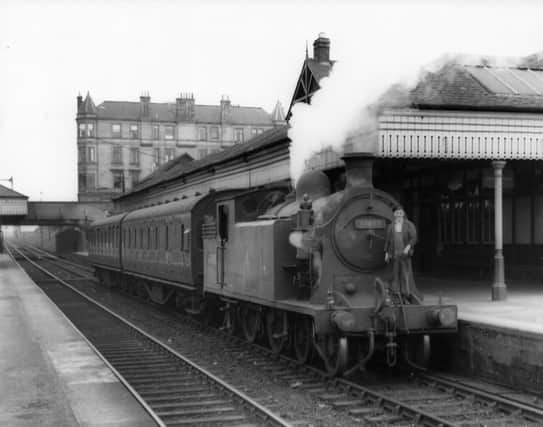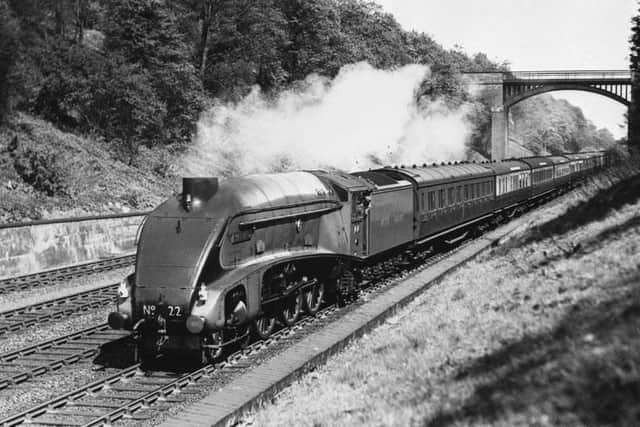Ian Scott: When the first steam locomotives came to Falkirk


I suppose it’s partly the inability to walk past the car but it’s also that modern locomotives are as dull as ditchwater compared to the mighty steam engines of my childhood.
To see the ‘Union of South Africa’, the ‘Dominion of Canada’ or the magnificent ‘Mallard’ thundering, all smoke and steam, through the High Station was an unforgettable experience.
Advertisement
Hide AdAdvertisement
Hide AdWe brave trainspotters with our Ian Allen guide books waited for many an hour by the line to catch a glimpse of the green or blue engines all fitted out in gleaming brass with smoke streaming from the chimney and steam hissing and spitting from every part of the magnificent machinery.


In my mind’s ear and nose – I can still hear the sound of pistons pumping and wheels singing on the rails and smell the burning coal, hot oil and grease which filled the air long after the train had disappeared from sight.
However the excitement we felt must have been as nothing compared to the effect the very first steam locomotives had on a rural population used only to the plodding step of the horse or the steady, silent glide of a canal barge.
February 18th 1842 is a red letter day in Falkirk’s history.
Advertisement
Hide AdAdvertisement
Hide AdJust 13 years after Stephenson’s ‘Rocket’ ran on the Liverpool and Manchester line, the first major Scottish service linked Edinburgh and Glasgow passing south of Falkirk and Polmont where the railway company decided to build ‘halts’ or stations.
On the great day a train carrying 1000 enthusiasts of the Glasgow and Edinburgh Railway Company reached Falkirk High half a mile from the town, after a journey from Glasgow lasting one hour and a quarter.
Reporters said that: “The sides of the railway were lined with admiring spectators, the bridges across the line, the station and every height which commanded a view of the train were crowded and young and old rent the air with their cheers.”
The locomotive was fed with “fresh water and coke”, given a second engine and cheered on its way into the mouth of the tunnel.
Advertisement
Hide AdAdvertisement
Hide AdSoon four trains left each day in both directions and the rough track that was part Cow Wynd and part Coal Heugh Brae now became the High Station Road with passengers collected by horse buses for the bumpy journey to the town centre.
A few years later a second line from Polmont to Stirling was routed through Falkirk by the Stirlingshire Midland Railway and a new station at Grahamston was constructed.
The age of the train meant the beginning of the end for the canals.
New and expanding firms sought out sites near the track and great sidings and marshalling yards were built in the industrial heart of the town and networks appeared across the district linking collieries and iron foundries.
Advertisement
Hide AdAdvertisement
Hide AdSoon every town and village had its own station and the lives of the population changed forever.
For well over a century steam powered engines carried passengers and freight to all corners of the land and helped link communities in a way that had not been possible beforehand.
The 1960s saw the end of the steam age but thankfully we can still experience some of the magic down at the Scottish Railway Preservation Society’s excellent facilities in Bo’ness.
A visit there is a steam-powered trip down memory lane.
Thank you for reading this article on our free-to-read website. We're more reliant on your support than ever as the shift in consumer habits brought about by Coronavirus impacts our advertisers.
Please consider purchasing a subscription to our print newspaper to help fund our trusted, fact-checked journalism.
Comment Guidelines
National World encourages reader discussion on our stories. User feedback, insights and back-and-forth exchanges add a rich layer of context to reporting. Please review our Community Guidelines before commenting.
